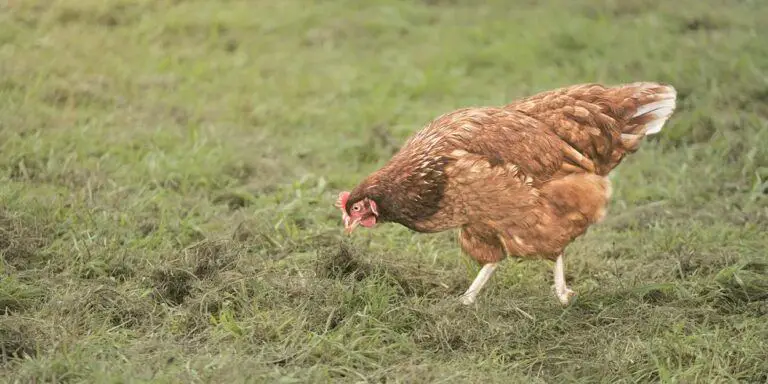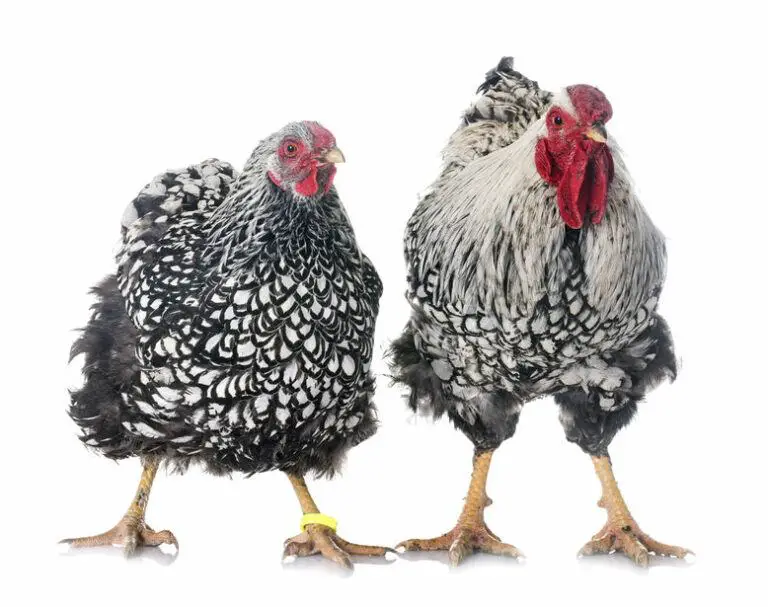Rhode Island Red: An In-Depth Look At This Amazing Breed
A very common chicken called the Rhode Island Red got its start in a tiny New England town. Most of us who happen to own one of these yardbirds can attest to the fact they are a great addition to any flock!
Overview
Rhode Island Reds are one of the most commonly owned breeds of chickens here in the U.S. It is American through and through and proudly stands as the state bird of Rhode Island (where it originated from.)
This breed is an excellent dual-purpose chicken that fits in nicely in rural or urban settings. Homesteaders have come to love this breed not only as a food source but also as a relatively easy-to-raise breed. For information on other breeds, see this article.
Rhode Island Red Chicken Facts
“Rhode Island Red” aptly describes this breed by immediately letting you know where it’s from and its color. How easy is that? If you are considering this breed to raise as a broiler, layer, or pet, we have outlined a few key points about the breed.
Purpose
| Size (large)
| Varieties
|
Lifespan
| Temperament
| |
Hardiness
| Rhode Island Red Eggs Per Year
| |
Plumage
| Pecking Order
|
History And Background: Who Created The Rhode Island Red Chicken?
So, where did Rhode Island Red chickens originate from? According to the Livestock Conservancy, this breed’s origins began in New England in the 1800s with a parentage belonging to the Malay
. The Livestock Conservancy goes on to state that the ancestral lineage of Rhode Island Reds includes the Brown Leghorn, Java, and Shanghai.
In digging further into the history behind Rhode Island Reds, Little Compton, Rhode Island, is the birthplace of this chicken breed. The Little Compton Historical Society has on record how the Rhode Island Red’s origins began in this precise area.
A resident by the name of William Tripp (who also happened to be a farmer and peddler of sorts) brought home an acquired purchase from another town. This item happened to be a Malay rooster.
Now Malay chickens are rather strange looking and appear to be half chicken, half ostrich. Perhaps it was this odd feature that attracted Tripp into buying one. Malays are all legs and stand as tall as 30.” They can easily feed off of a dining table or stick their head over a garden fence. This breed hails from Asia.
The Malay rooster was brought in by ship (from Asia.) It was so unique in appearance that Tripp couldn’t resist getting it. He took it home with hopes of it breeding with his hens (which proved successful.)
As the new clutch of chicks grew, he was amazed at how plump they were and their prolific egg-laying abilities. He continued to breed the Malay rooster with his hens to produce poultry to sell.
It wasn’t until one buyer named Isaac Wilbour who purchased this new breed from Tripp that the Rhode Island Red breed took off. Wilbour realized this breed could meet the demands of a dual-purpose chicken.
He started a poultry business reproducing this new breed. His massive 400 acres of poultry farming put Little Compton, Rhode Island, on the map.
Today, a monument sits in place paying homage to the Rhode Island Red breed.

Appearance: Male vs. Female
Roosters are noticeably taller and larger than a hen. Their combs and wattles are bigger in size. The plumage in roosters is much more vibrant (red) compared to hens. The tail feathers of roosters are pronounced in height and size and are often dark.
Roosters also have a pronounced cape of feathers which are dark and their breast is lighter. At about 16 weeks, roosters begin to crow. Lastly, roosters are erect in stature.
Hens, on the other hand, are smaller in size with shorter legs. Their combs and wattles are also smaller. The color of their plumage is mainly limited to a rusty/orange-red color, whereas roosters’ feathers are more dynamic in color with variations of reds, black, burgundy, and brown.
The breasts of hens are darker compared to that of the rooster. Hens don’t crow but instead, make a cackling sound.
Health Conditions
Rhode Island Reds are a hardy breed with very few health issues to contend with!
Your typical mites, occasional pecking at one another, and vulnerability to predatory attack are a few things you must contend with any chicken breed.

Hatching
If you are considering hatching your own Rhode Island Reds, you should source your hatching eggs from a reputable breeder. Remember that anytime you do undertake hatching, you will most likely end up with roosters in the new clutch that will most likely need to be rehomed.
When hatching your own chicks, you’ll need to consider several things such as whether or not you’ll use an incubator or not, if you have a broody hen to use, how you will house them, etc. We have a complete article on hatching that you may find resourceful.
Pros And Cons Of Owning Rhode Island Reds
Although this breed has more positives than negatives, we broke down an overall list of both pros and cons below.
Pros
- Excellent dual-purpose breed
- Prolific egg-layer
- Hens are kid-friendly and easy going
- Cold and heat hardy
- Hardy against diseases
Cons
- Hens are not broody (which works against hatching your egg naturally)
- Roosters are aggressive
Frequently Asked Questions
Are Rhode Island Red chickens heritage?
According to the Livestock Conservancy, non-industrial Rhode Island Reds are considered (and listed as) a heritage breed. This breed is one of twelve chicken breeds listed on the 2021 Conservation Priority Poultry Breeds.
What are Rhode Island Red chickens used for?
Rhode Island Reds are typically raised for their abundant egg production; however, some farmers also raise them as broilers and harvest them for their meat.
Where can I find Rhode Island Red chickens for sale?
The last place you want to look for hatching eggs, chicks, or mature chickens is at flea markets, feed stores, eBay, and Craigslist. Reliable and reputable breeders are the best place to source your Rhode Island Reds.
Closing “Clucks”
We love having Rhode Island Reds in our flock! They are an easy breed to have around and don’t stir up much trouble with our other chickens.
They are one of our top egg laying breeds and we love finding those brown eggs in the coop every day!
We hope you’ve gained some appreciation for this incredible heritage breed and will consider getting a few for your own flock. Thanks for stopping by and happy ‘Chickening.’







